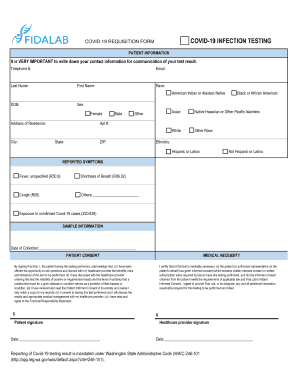
To read a leaf plot, the pretest probability is selected on the positive sloped central line (leaf's vein). 30 Figure 1 shows three leaf plots with the same specificity (98%) but different sensitivities: 70%, 90%, and 99%. One systematic review of low-quality studies consensus and disease-oriented evidenceĪ leaf plot offers an alternative through visual representation of pre- and posttest probability based on designated test sensitivity and specificity. 36, 37 Antibody test results should not yet be used to infer immunity to SARS-CoV-2 infection or inform decisions to discontinue social distancing or use of face masks or personal protective equipment. 21, 32 Reverse transcriptase polymerase chain reaction detection of viral RNA does not necessarily correlate with infectivity.Īntibody tests may help identify past SARS-CoV-2 infection if performed two to four weeks after symptom onset. Use a symptom-based approach for discontinuing isolation precautions for most patients with COVID-19. 13, 25, 27 Therefore, clinicians should recommend isolation precautions despite a negative test result when pretest probability is high.Įxpert opinion, one systematic review of low-quality studies with inconsistent results 8, 25, 27 A leaf plot can aid in visualizing how pretest probability and test characteristics impact posttest probability.Ī negative molecular or antigen test result might not rule out SARS-CoV-2 infection when pretest probability is high. The pretest probability of COVID-19 should be based on the patient's exposure to someone with a confirmed or probable case, signs or symptoms of COVID-19, local or population-specific COVID-19 prevalence, and presence of an alternative diagnosis. Antibody tests might help identify past SARS-CoV-2 infection if performed two to four weeks after symptom onset however, because of uncertainty about the extent and durability of postinfection or vaccine-induced immunity, they should not yet be used to infer immunity or guide discontinuation of personal protective measures.


A symptom-based approach is preferred over a test-based approach for discontinuing isolation precautions for most patients with COVID-19 because prolonged shedding of viral RNA does not necessarily correlate with infectivity. A negative molecular or antigen test result might not rule out SARS-CoV-2 infection when pretest probability is high, depending on the test's sensitivity. Using a leaf plot is an efficient way to visualize posttest probability of disease based on estimated pretest probability and the test's sensitivity and specificity. Pretest probability of disease should be based on a patient's exposure to someone with a confirmed or probable case, signs or symptoms of COVID-19, local or population-specific COVID-19 prevalence, and presence of an alternative diagnosis.

However, antigen tests generally have lower sensitivity and thus greater potential for false-negative results. Molecular and antigen SARS-CoV-2 tests both have high specificity. Clinicians should consider a test's characteristics, test timing in relation to symptom onset, and the pretest probability of disease when interpreting results. Molecular and antigen tests can detect current SARS-CoV-2 infection and are used to diagnose COVID-19. The spectrum of asymptomatic, presymptomatic, and symptomatic SARS-CoV-2 transmission presents challenges for evaluating SARS-CoV-2 test performance for diagnostic or screening purposes and for interpreting test results. SARS-CoV-2 is the novel coronavirus that causes COVID-19.


 0 kommentar(er)
0 kommentar(er)
